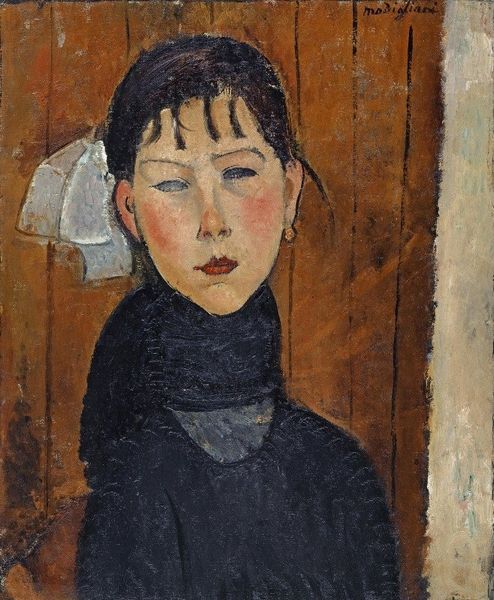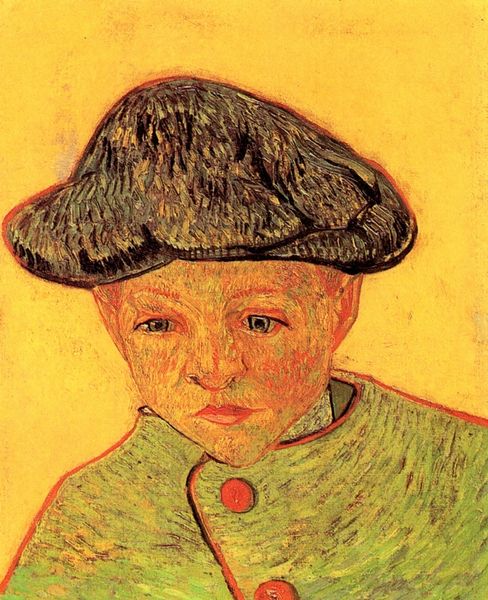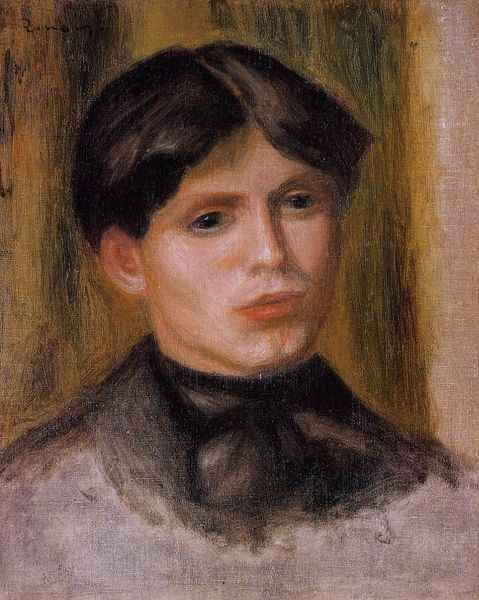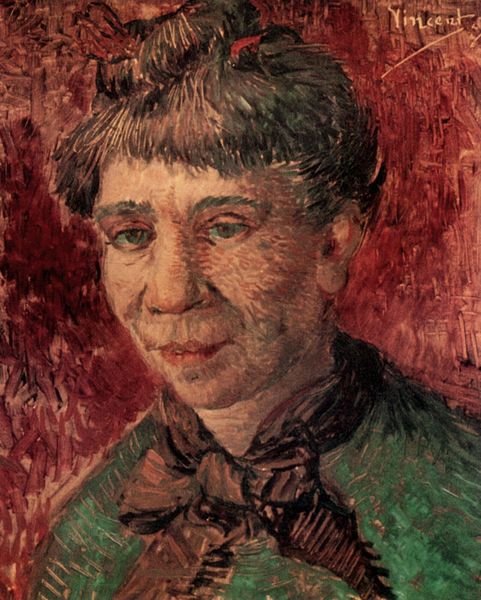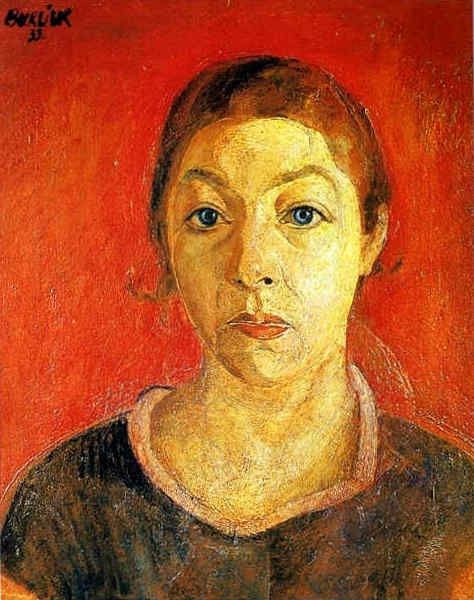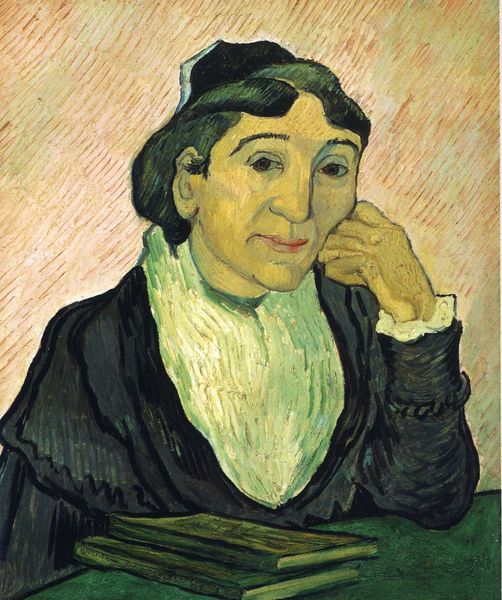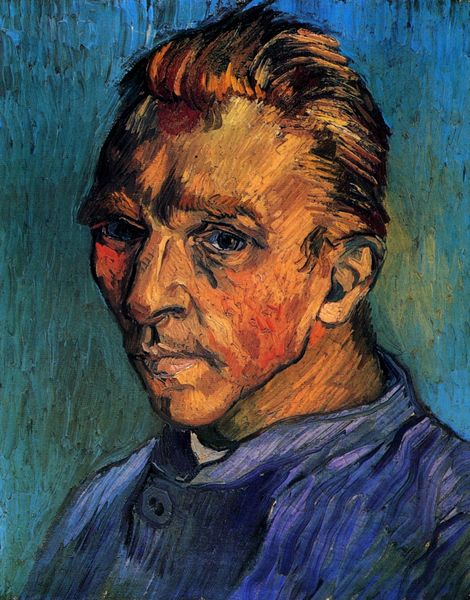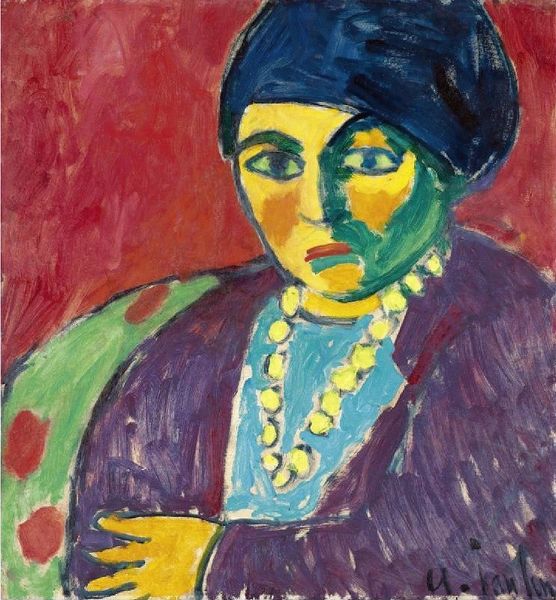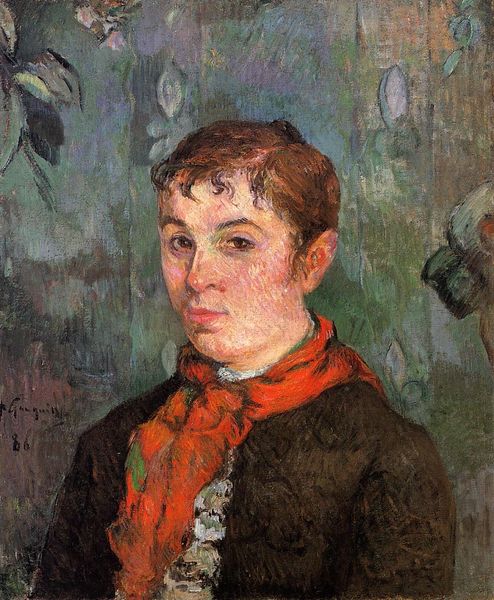
painting, oil-paint, impasto
#
portrait
#
painting
#
oil-paint
#
oil painting
#
impasto
#
post-impressionism
Dimensions: 63.7 x 48 cm
Copyright: Public domain
Vincent van Gogh painted this portrait of Madame Trabuc with oil on canvas. Notice Madame Trabuc’s stern expression, which seems softened by the delicate flower pinned to her dress. The flower, a seemingly simple adornment, carries a lineage stretching back through centuries. In classical antiquity, flowers were associated with Flora, the goddess of springtime and renewal. They were symbols of life’s fleeting beauty and the cyclical nature of existence. This motif transcends time, appearing in Renaissance paintings as allegories of love, and in Victorian England as a coded language of sentiment. Even in contemporary times, floral imagery continues to evoke themes of fragility and growth. Perhaps, subconsciously, Van Gogh chose the flower to hint at the hidden depths of Madame Trabuc’s inner life, a subtle contrast to the stoicism etched upon her face. It serves as a powerful reminder of our shared humanity. The flower, an emblem of hope and resilience, blooms across epochs, whispering tales of enduring beauty.
Comments
No comments
Be the first to comment and join the conversation on the ultimate creative platform.


